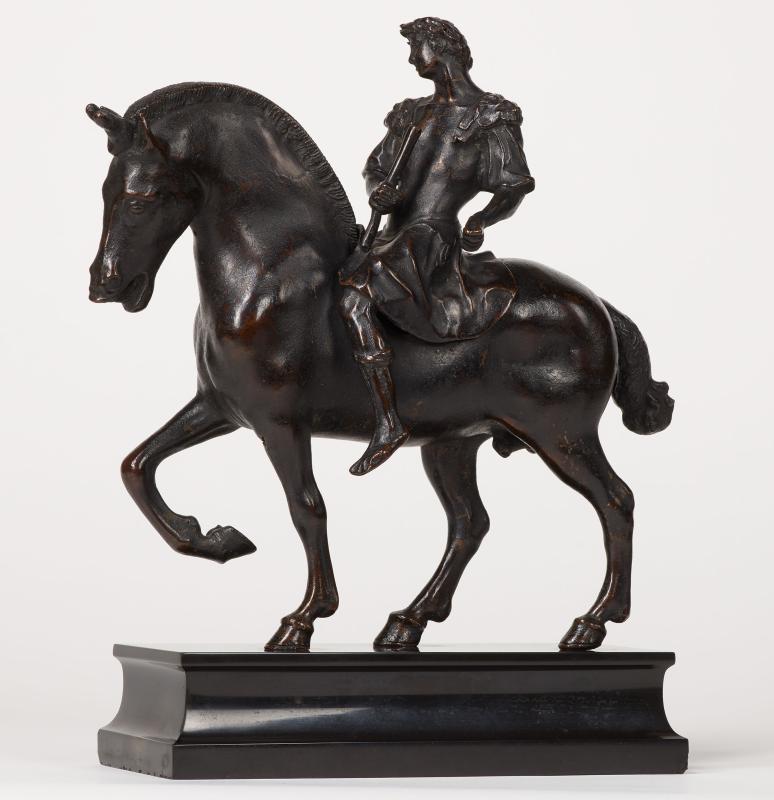
While this horse bears similarities to other equestrian bronzes from the late 16th century, it seems to be the only known cast of its type. Wilhelm Bode published it as the work of Leonardo in his catalogue of Morgan's bronzes, and in the show of Morgan's collection at the Metropolitan Museum of Art in 1914 it was presented as an "atelier copy of a model by Leonardo for his celebrated equestrian statue of Francesco Sforza." While this argument is not convincing, the animal itself is not dissimilar to ones depicted in Leonardo's drawings.
Bronzes of horses, alone and with riders, became hugely popular in the 19th century. A closely related cast featuring the same combination of horse and rider was in the collection of Adolphe Thiers (1797-1877), who also attributed it to Leonardo; it is now in the Louvre (TH 61). Like the Morgan bronze, it lacks provenance before the middle of the nineteenth century.
The rider was cast separately and attached. The rider's tunic conceals an opening in the back of the horse. The rider seems to be closer in manner to Michelangelo's figures for the New Sacristy, Basilica San Lorenzo, Florence, as first observed by Ulrich Middledorf.
A male rider wears antique-style dress, with lions' heads decorating his shoulders, and sports a laurel wreath. He carries a baton and sits atop an unsaddled, hog-maned horse with one foreleg raised. The dark surface coating has chipped away in places to reveal a richer patina.
